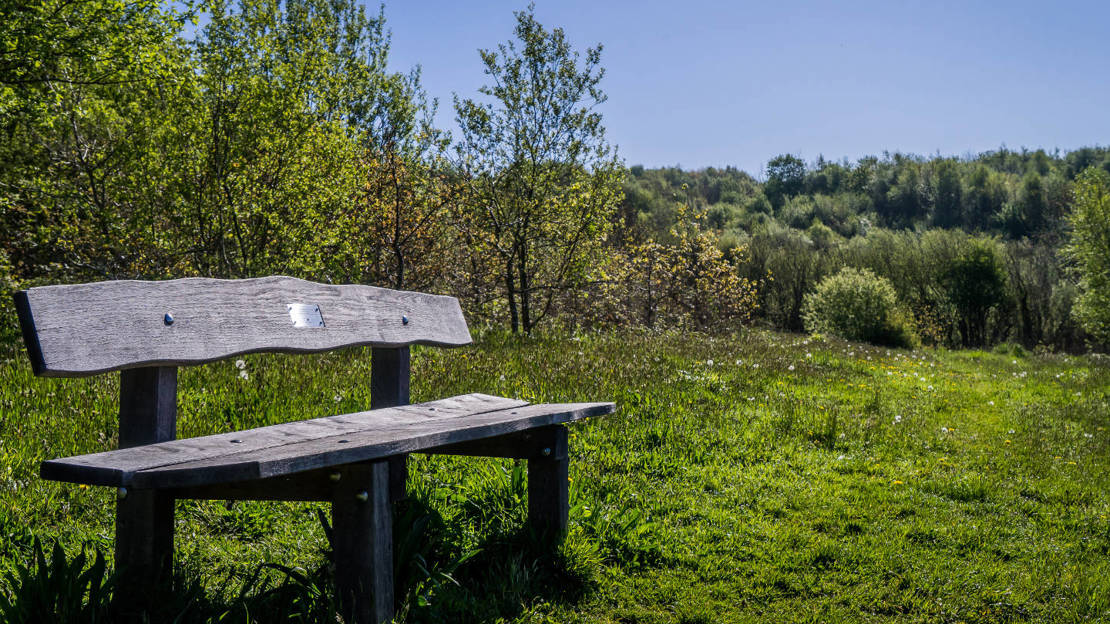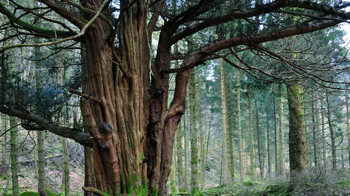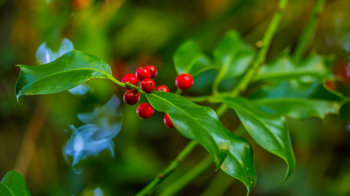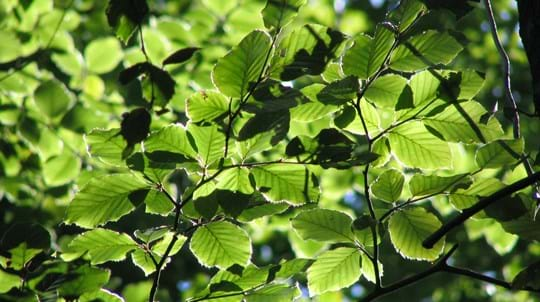
Little Doward Woods
Wyastone Leys nr Whitchurch

Woodland Trust wood
82.39 ha (203.59 acres)
SO538159
Explorer 14
OS Landranger 162
Although only a small part of Little Doward Woods is ancient, it is an incredibly important habitat. It provides refuge for many plants and animals, some of which are only found in isolated pockets across the UK.
Little Doward Woods forms part of the Wye Valley Special Area of Conservation (SAC) and Upper Wye Gorge Site of Special Scientific Interest (SSSI). There are numerous veteran oak and beech trees here, plus rare and interesting wildlife. At the top of the hill there is a Bronze and Iron Age hill fort – Little Doward Camp. Here the more open woodland provides a different habitat and gives spectacular views across the Wye Valley.
Features
- Parking nearby
- Public access
- Grassland
How to get to Little Doward Woods
LIttle Doward Woods is 82 hectares of ancient woodland and parkland that has been planted in places with conifer trees. It's located on the Doward Hills, just outside Monmouth on the English side of the border with Wales. The River Wye runs alongside the bottom of the wood.
Accessed from the A40 following signs for Ganarew. Coming westward (towards Monmouth) leave the A40 following signs for Ganarew. Remain on this road past the left turn (also signposted to Ganarew) opposite the entrance to Wyastone. You will soon come to the Woodland Trust car park on your right.
Travelling eastwards (from Monmouth) take the turning from the A40 towards Ganarew. Keep on the road which goes over the top of the A40. At the junction turn left (Wyastone is opposite this junction). Shortly along this road you will find the Woodland Trust car park on the right-hand side.
Abergavenny Railway Station is approx. 17 miles away to the west and Hereford Station is 18 miles to the north.
There is a bus stop by the entrance to the wood, marked Wyastone Business Park. Check for local services connecting Ross-on-Wye and Monmouth via Whitchurch.
For more information on bus service visit www.traveline.info.
Facilities and access
The wood covers Little Doward Hill, so most paths have steep sections along them. There is a mix of wide forestry tracks, allowing motorised wheelchair access to the hill fort, and smaller unsurfaced woodland paths, some quite rough and steep.
There is no mountain bike access within this wood.
There is a surfaced car park for approximately 12 cars just off the A40.
The nearest toilets are at Symonds Yat Services, Ross-on-wye, HR9 6DP. The wood is also close to the village of Whitchurch and the town of Monmouth.
Wildlife and habitats
Animals
Little Doward is of national importance for its saproxylic beetles (beetles which need dead or decaying wood to complete their life cycle), including the incredibly rare Cosnard’s net-winged beetle. The high number of ancient and veteran trees at the wood provide the deadwood and associated fungi these species rely on.
Look out also for grizzled skipper, wood white and marbled white butterflies, all three British woodpeckers and elusive birds of prey such as goshawk and peregrine falcon.
Trees, plants and fungi
There is a wide mix of native trees across the wood as well as planted conifer trees in places. There are also a number of ancient and veteran trees, particularly beech trees. Ferns and lichen communities grow on the limestone outcrops, plus rare varieties of whitebeam between the hill fort and the River Wye.
The nationally rare four lobed maidenhair spleenwort can be found here, as well as fingered sedge, Tintern spurge and spreading bellflower. On the banks and terraces of the hill fort we've cleared the smothering post-war conifer plantation, encouraging delicate plants like belladonna and wild marjoram and opening up a tremendous vista across the Wye Valley.

Dedicate at this wood
This wood is one of more than 50 across the UK where it's possible to dedicate trees, benches or larger areas of woodland. Mark a special occasion or celebrate the life of a loved one with a meaningful gesture that lasts.
Choose a dedicationHabitats
A mix of ancient woodland, secondary native woodland, limestone grassland within the hill fort, ancient trees and deadwood provides a good variety of habitats for a wide range of species. You'll find mainly beech and yew woodland around the limestone cliffs, with beech and sweet chestnut near the car park.
About Little Doward Woods
History
This site has been a feature of the landscape for centuries, first as a Bronze and Iron Age stronghold, then as common land before being enclosed and turned into a Victorian deer park. Down by the river, 18th-century limestone kilns have been preserved and restored to give an indication of the Wye Valley’s industrial past.
When turning the southern corner of the fort, look for a skinny path to the right through brambles: it descends beside cliffs into a small ravine. This miniature canyon was dynamited by the 1820s metal magnate Richard Blakemore, whose ‘picturesque’ landscaping of his estate here included a 70ft iron tower on the hilltop, so that his guests could gaze downriver to Monmouth.
In the 1950s the Forestry Commission planted large parts of the wood with a mixture of conifer species. In 1953 in the south western corner of the wood, they even planted a pattern of larches and cedars to create the letters ER in celebration of the Queen’s coronation.
Little Doward Camp
Little Doward Camp a Scheduled Monument which crowns the wood and provides spectacular views across the Wye Valley. It was the hilltop stronghold of Iron Age chiefs, and the battlements can still be explored today. Historians have linked the fort with the fifth-century warlord Vortigern, said to have fled here from the invading Saxons.

A lasting legacy
This wood is just one of many to have been protected by gifts in wills, securing it for generations to come. Your legacy gift could also make a real difference to woods, trees and wildlife.
Learn what your gift could meanThings to do at Little Doward Woods
Walks
Explore the wood's network of paths and waymarked trails which also connect to longer walks along the River Wye and through neighbouring woodland. From King Arthur's Cave you can pick up waymarkers for the Highmeadow Trail south of Little Doward, which scrambles excitingly over little crags and eyries above the Seven Sisters Rocks, a line of limestone fangs steepling above the Wye.
The southern part of the wood also contains a stretch of the Wye Valley Way, a long distance trail between Chepstow and the source of the River Wye in the Welsh mountains.











































